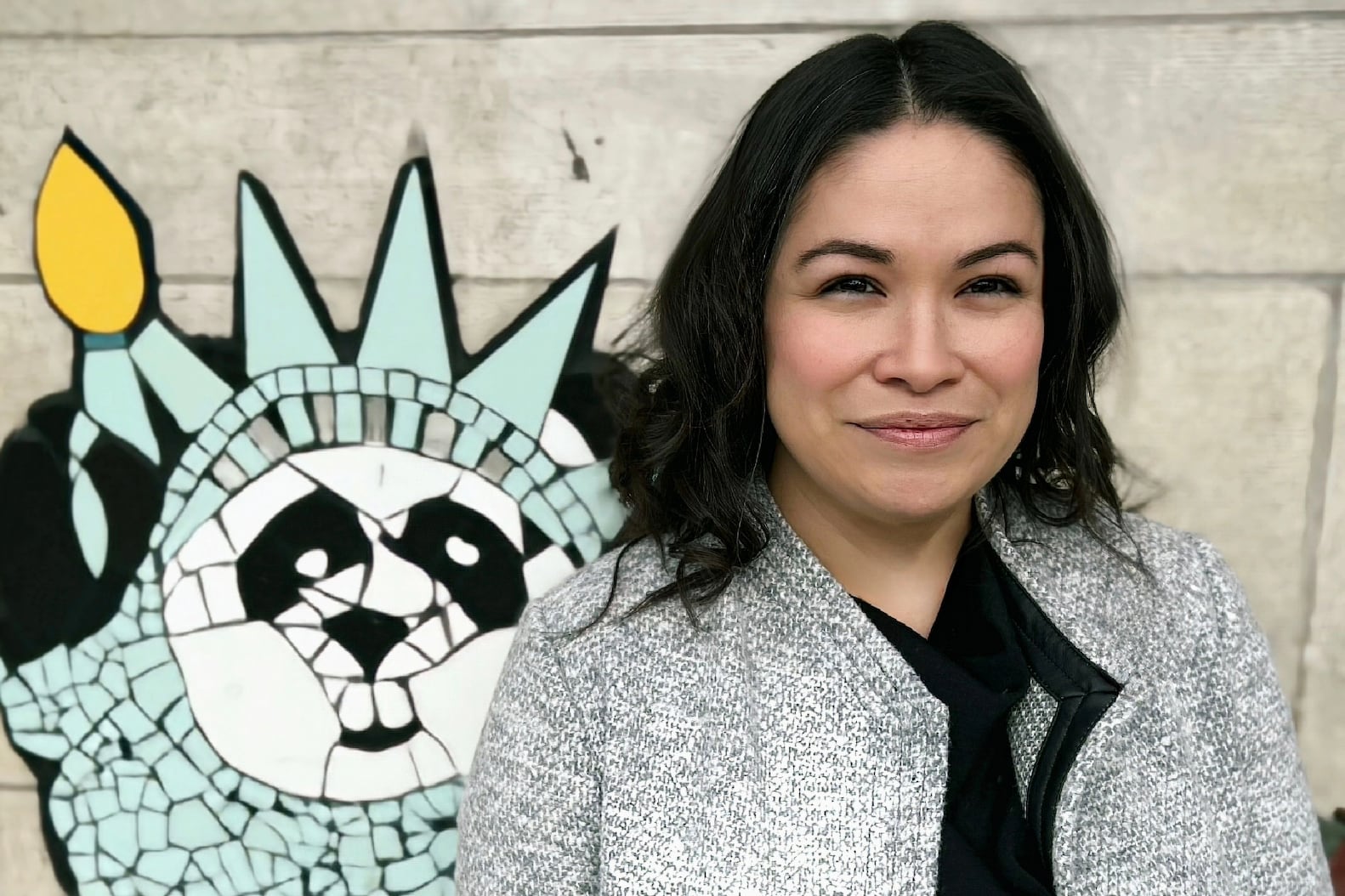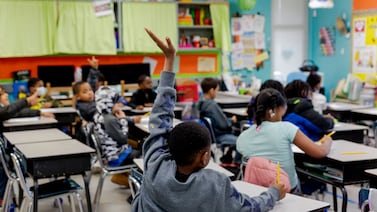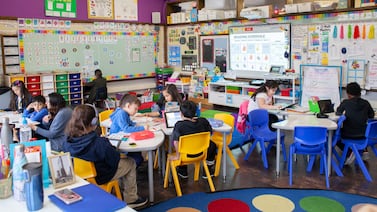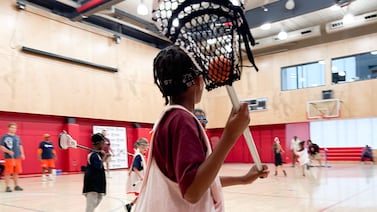Jasmine Juarez took over as principal of Pilsen Community Academy on March 16, 2020. She was eager to meet her new staff and start forging relationships with them.
The next day, COVID shut down campuses across the state, including the Southwest Side elementary school.
For Juarez and her fellow Chicago Public Schools principals, the following years have brought a gauntlet of challenges: the abrupt shift to remote learning, the academic and mental health toll the pandemic exacted from students, a return to in-person learning complicated by COVID surges and staffing shortages.
“There were times when I hit the breaking point,” Juarez said. “I still do, but I always go back to my why.”
Before the pandemic, the district’s principal turnover was slowing, dipping to a rate below the national average. Still, about half of elementary school principals and more than two-thirds of high school principals were leaving their jobs within five years, according to a pair of new University of Chicago reports based on eight years of staffing data and interviews with local principals.
Then, COVID upended education and the district saw a sharp rise in principal and assistant principal resignations and retirements last school year, data obtained by Chalkbeat showed.
When school leadership changes, research shows there can be a dip in student achievement and an uptick in staff turnover — an especially unwelcome disruption in the midst of COVID’s upheaval.
Now, with a large class of 57 new principals starting last summer, Chicago Public Schools officials say they are focused on improving the principal experience. The new University of Chicago studies offer some clues on how to boost retention, backing up district efforts to provide mentoring for novice school leaders and recruit from the ranks of assistant principals.
Pandemic brought increased turnover and some silver linings
Juarez, the Pilsen principal, said starting her job at the dawn of the pandemic was an intense challenge, but it was also freeing. No school leader was prepared for what came next, and she bonded with colleagues as they navigated the uncertainty together.
“The pandemic really put us all on a level playing field,” she said. “We were all leaders experiencing something for the first time together.”
Still, she leaned on Patricia Harper Reynolds, the principal at nearby Walsh Elementary and the mentor the district assigned her through a program that pairs first-year and seasoned school leaders.
Juarez, a former bilingual math teacher who had served as an assistant principal at Curie High School, picked Harper Reynolds’ brain about how to design a remote learning schedule. She asked Harper Reynolds to read over emails to parents about COVID protocols and other topics. They traded information about food pantries and other community resources where they could steer struggling families.
Because Juarez was “a COVID principal,” she got an extra year in the district’s one-year mentorship program — an extended stretch she now believes should be the default.
Pre-pandemic efforts such as that mentorship initiative were paying off in improved longevity, according to data from the new principal studies, a partnership between the NORC at the University of Chicago, the University of Chicago’s Consortium on School Research and the University of North Carolina at Chapel Hill
University of Chicago author Molly Gordon said the studies sprang from previous University of Chicago research that showed the powerful link between school leadership and student outcomes.
The new studies found that every year leading up to the pandemic, roughly a tenth of Chicago Public Schools campuses experienced a leadership change. Schools serving a mix of Black and Latino students saw the most turnover, followed by campuses with predominantly Black student populations.
Schools serving largely low-income students also had much more leadership flux. The study did not look at how longevity varied by the race of the principals themselves.
The study found Chicago Public Schools principals are more racially diverse and much more likely to be female than their colleagues nationwide. But Latino school leaders such as Juarez, the Pilsen principal, continue to be underrepresented. In 2020, when almost half of the district’s students were Latino, only 17% of its principals were. Research shows that when students see themselves represented in school leadership, their outcomes, including their math achievement, tend to improve.
The pandemic’s arrival added new pressures to principals’ jobs. Many had to handle their regular duties while also chipping in as substitute teachers, custodians, cafeteria workers, and technology coordinators.
After dipping earlier in the pandemic to continue the pre-COVID trend of declining turnover, the number of principal resignations and retirements shot up during the 2021-22 school year. During that year, 83 principals and assistant principals left their posts, a 43% increase from the eve of the pandemic. While all employee groups saw more departures, the turnover rate among school leaders jumped the highest.
District officials say they are reexamining the principal’s role
COVID — and the additional stresses it brought — spurred an increase in efforts to unionize school leaders across the country, according to a national principals union.
In Chicago, supporters of a perennial effort to unionize the district’s principals have said that pandemic-era instability strengthened their argument that school leaders should be able to bargain over their working conditions and get greater job security.
In January, the Illinois Legislature approved a bill that would allow Chicago principals to form a union, which had repeatedly failed to clear both chambers in recent years. Gov. J.B. Pritzker’s office said in a statement to Chalkbeat earlier this month that the governor “looks forward to reviewing the bill when it reaches his desk.”
Troy LaRaviere, the head of the Chicago Principals and Administrators Association, which pushed for the change, did not respond to requests for comment.
District officials, who have opposed the unionization efforts, say they are responding to the uptick in departures by doubling down on support for principals. Last year, the district revived its principal advisory council and boosted its compensation package for assistant principals.
Allison Tingwall, who heads the district’s Office of Principal Quality, says officials are trying to better anticipate departures so it can help schools minimize the disruption when a principal leaves. And, over the past year, the district has worked to update its list of principal competencies — the skills a principal needs to be prepared for the job — and adapt its training and coaching for fledgling leaders accordingly.
In the decade before the pandemic, districts held up the idea of principals as instructional leaders — administrators who spent the bulk of their time observing classrooms and coaching their teachers. But more recently, districts have come to acknowledge that, especially on bustling urban campuses, this idea is not realistic — and principals’ COVID-era juggling act made that even clearer.
Now, Tingwall said, the district wants to prepare principals to set a big-picture course for their campuses and form leadership teams that will take on the job of supporting educators.
Chicago aims to promote more assistant principals
The district has also tried to step up hiring among its own assistant principals, Tingwall said. About 85% of the 57 new school leaders last fall were former assistant principals; traditionally, about half the district’s principals have come to the job through that route.
The University of Chicago studies validate this strategy: Researchers found Chicago school leaders who came from the ranks of assistant principals were significantly more likely to stick around past the five-year mark. Former assistant principals told the authors that role prepared them more than anything else to step into the top job.
“The AP position is really becoming a springboard for the principalship,” said Alyssa Blanchard, one of the studies’ authors at the University of Chicago’s Consortium on School Research. “Those principals are ready to take on the role and stay in the job in the longer term.”
Heidy Moran, the former Schurz High School assistant principal who took over at the Northwest Side campus at the start of the school year, was one of the 2022 class of new school leaders. She says for principals, knowing their school community well is a major part of being effective.
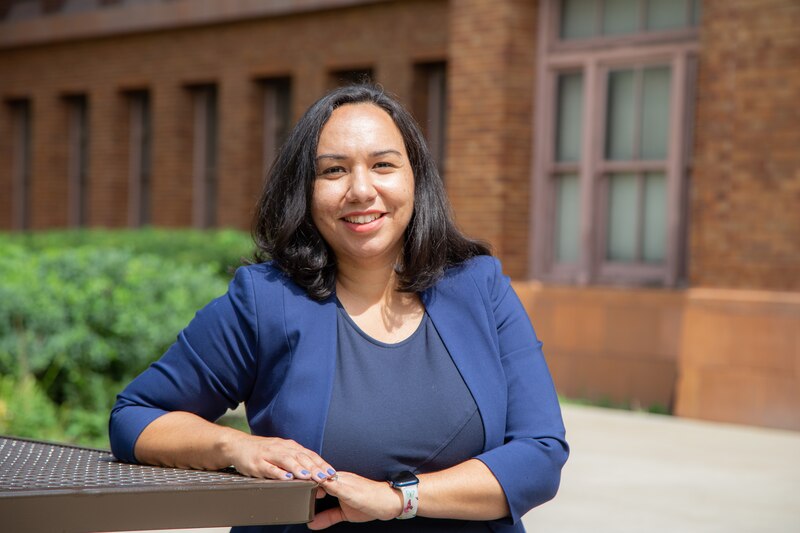
“Being an AP for four years helped me really understand the school culture and the school community and become a part of that fabric,” she said.
That role did not give her as much of a window into staffing and budgeting, but she got extensive training in those areas last year through a program called Leadership Bridge, a partnership with The Chicago Public Education Fund.
Juarez, the Pilsen principal, recently got accepted to the Cahn Distinguished Principals Fellowship, which she sees as an opportunity to continue growing. She says she hopes to serve as a mentor to Latino educators and administrators who have their eye on the principal role.
As a former Chicago Public Schools student who never had a Latino principal, she once questioned if she was cut out for the job. Juarez said many others might never set that goal unless a school or district leader proactively reaches out to say, “I think you’d be amazing at this.”
Mila Koumpilova is Chalkbeat Chicago’s senior reporter covering Chicago Public Schools. Contact Mila at mkoumpilova@chalkbeat.org.

